At the 13th ICE a standardised transliteration of the Ancient Egyptian language was established. The Leiden Unified Transliteration/Transcription has been accepted by the members of the International Association of Egyptologists as the new standard in the transliteration/transcription of the Ancient Egyptian language.

The theme of the 13th ICE in Leiden was the Future of Ancient Egypt. In order to make progress in one of the major problems in the field, the congress’ president, Olaf Kaper, came together with Professor Joachim Quack (University of Heidelberg) in order to convene a special workshop on the topic of transliteration.
A number of specialists in the Egyptian language were invited from different countries and representing a number of different projects or databases in relation to the Egyptian language, and including all its phases from the earliest texts up to Demotic. The lack of standardization of transliteration/transcription practices in Egyptology is generally recognized to be a problem, especially with the growing importance of digital tools and the increasing need of other disciplines to have access to Egyptological data. For students of Egyptian the different systems in use also provide an unnecessary obstacle.
Leiden Unified Transliteration/Transcription (12 August 2023): standard transliteration of the uniliteral signs in Ancient Egyptian.
A group of fifteen Egyptologists participated in the meeting on 8 August 2023. Contrary to expectations, the meeting arrived at a number of conclusions, and most notably a new transliteration was unanimously established of the uniliteral signs. Care was taken to let the new standard in the transliteration agree as closely as possible with what most Egyptologists already use, so that the agreement would have a chance to be accepted by all. The results were presented to the general assembly of the IAE at the closing session of the ICE and the members of the IAE voted to accept the new transliteration.
This decision is a first step in compiling a common system of transcription, which the same working group has been mandated to continue working on in the next 12 months (starting from the IAE General Assembly date).
Several details still need to be worked out, such as the use of diacritics (brackets and dots), the possible abandonment of capital letters, the possible systematic inclusion of the final weak radical of verbs, and other matters. With the present document, the basis for such a common system has been laid, which should be adopted by all Egyptologists in current databases and applied in all future text editions and publications about the Egyptian language.
A new version of the Trlit_CG Times font is now available from the Online Egyptological Bibliography website. Unicode values for all signs will soon be added. An article will be prepared including the working group’s considerations.
Olaf Kaper, 12 August 2023
